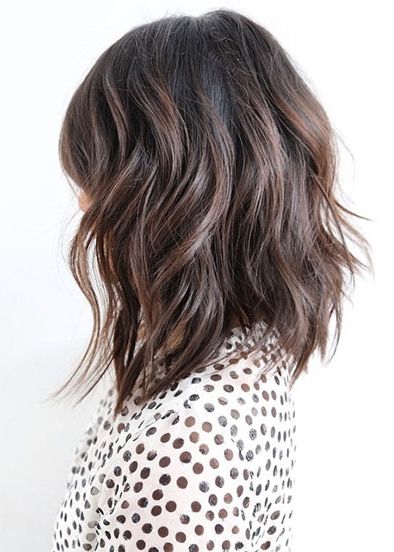To layer or not layer hair is often hotly debated, however this season long feather-light layers could be the secret to the ultimate relaxed-looking style. To clarify the ins and outs, as well as the up and downside to layered hair, we asked one of Beauty EQ's favourite influencers, Danny Pato from D & M Hair Design in Auckland.
What are the advantages of layering hair?
Layering is a wonderful technique, to add movement. However, it all depends on the texture, your face shape and the style you want.
For example, if your hair is coarse and curly and all one length, it will often fan out into a pyramid shape; this is where layering can help reduce bulk on the ends and even out the volume. If your hair is long and straight and cut to one length, the weight of the hair will make it fall flat against the scalp once styled, and it won’t hold curl or movement. This is where layering creates fullness, that helps the shape last. You can also use layers to flatter your face shape. For example, if your face is narrow and long, layers add fullness and width to a hairstyle, complementing your face.
When should you not have layers?
Layers will probably not be right for you if you have an oval face shape, and your hair is straight and fine. In this case, a blunt cut may be more flattering.
To understand hairdresser speak, what's round layering?
Round layering is a classic layering technique, using a curved cutting line to create an overall rounded shape to the hairstyle. It removes a lot of weight from hair, so it’s ideal for people with sharp features and thick hair types.
And what about vertical layering?
Vertical layering means cutting layers into the hair using a vertical cutting line, and removing weight, but not the overall length. The upper layers are cut to gradually shorter lengths, creating a soft, natural wave and adding lift.
What hair type is best suited to layering?
For straight hair: A blunt cut creates fullness on fine straight hair. While you can add a bit of movement and body with a few long layers, tread carefully, as too many layers can make this hair type look stringy and paper-thin.
For wavy hair: With wavy hair, layers can work best when they are evenly distributed, keepinglayers longer when framing the face.
For tight curls: For tighter curls and long hair, a blunt cut can work beautifully with a few shorter layers just around the face. However, layers all round tend to work on shorter or medium length, tightly curled hair.
For thick hair: Layers work wonders on thick hair, especially for removing weight and bulk.
Do you consider face shape, when layering?
Yes, if you’ve got an oval face shape, go for longer layers that frame the face. For a square face shape, you need to keep your layers light, soft and subtle to help soften the jawline.
Round face shapes suit one-length cuts and a-line bobs to lengthen the face, as well as shorter, choppy layers to define cheekbones and the jawline. And for heart-shaped faces, you suit longer layers in a cut.
How do you style layered hair?
For anyone with medium to long layered hair, your at-home styling kit should includes a professional grade hair dryer, round brush, a few sectioning clips and thermal protection spray. I like Oribe Balm d’Or Heat Styling Shield, $72 and the volumising product, such as Oribe Maximista Thickening Spray, $49. Also a hairspray, to keep your style in place, such as Oribe Superfine Hair Spray, $56.
Learn more about Oribe.









